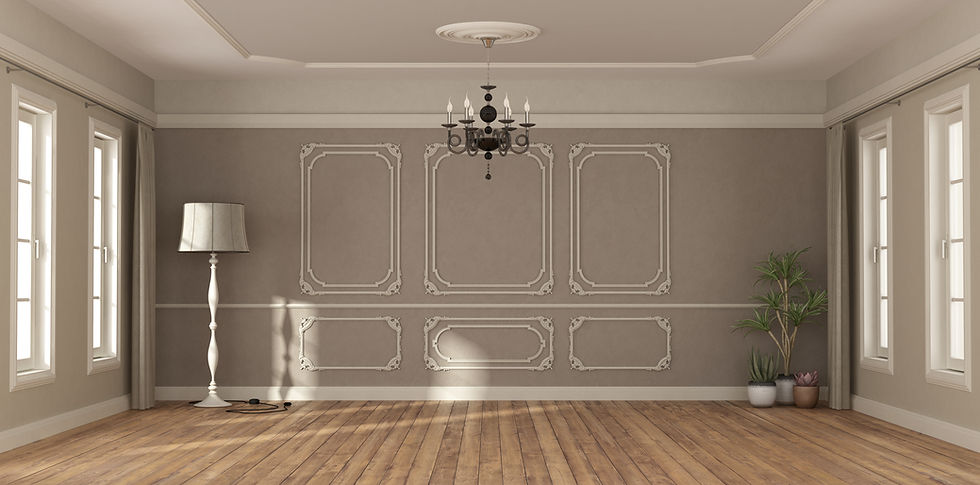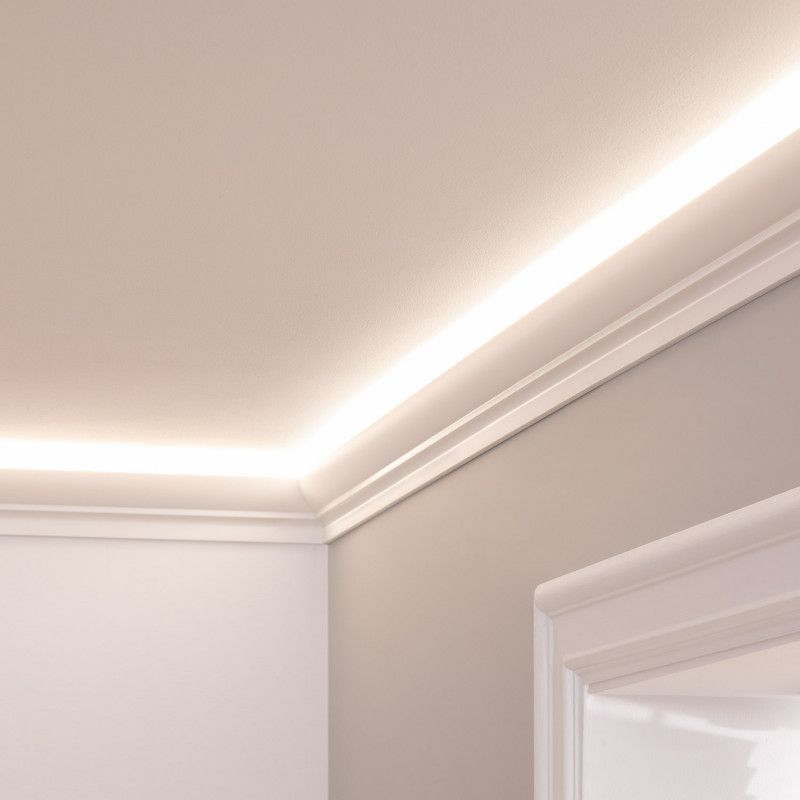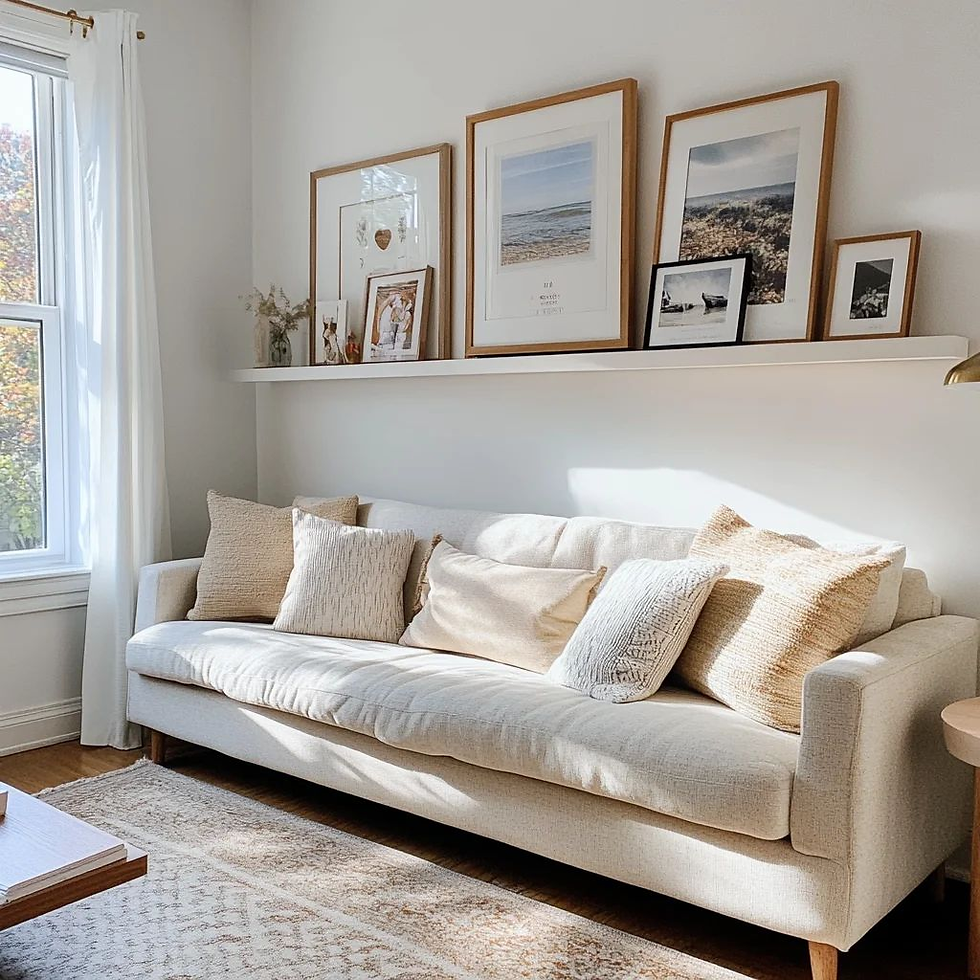
Interior trim might seem like a minor detail, but it plays a major role in defining the aesthetic and character of a home. By selecting the right trim style, you can enhance the architectural features of your space, add depth, and create a cohesive look. Whether you're renovating an older home or building from scratch, understanding the various interior trim styles available can help you make informed design decisions. In this article, we will explore some of the most popular interior trim styles today, providing a comprehensive guide to help you navigate your choices.
Understanding Interior Trim

Interior trim refers to the woodwork or moldings used to frame windows, doors, walls, and ceilings. These decorative elements can add character to any room, and choosing the right trim style can complement your home's overall design theme.
The Role of Interior Trim
Trim serves as a decorative element that can enhance the structural features of a home. It acts as a bridge between different surfaces, such as walls and ceilings, providing a finished look. Trim can also conceal joints, seams, and imperfections in construction, contributing to a polished appearance. By considering the function of trim, you can use it to accentuate certain architectural features, creating a harmonious balance throughout your home.
Types of Trim Materials
While wood is the traditional material for trim, modern options include MDF, PVC, and polyurethane. Each material offers distinct advantages in terms of cost, durability, and ease of installation. Wood provides a classic, rich look and is often preferred for its natural beauty, while synthetic materials offer resistance to moisture and pests. Understanding the pros and cons of each material will help you choose the best one for your needs and budget.
Matching Trim with Architectural Styles
The style of trim you choose should align with the architectural style of your home. For example, ornate trims with detailed profiles are well-suited for Victorian and Colonial homes, while simpler, clean lines are ideal for modern and minimalist designs. By matching the trim style to your home's architecture, you can create a cohesive aesthetic that enhances the overall appearance of your space.
Crown Molding

Crown molding is a classic choice that adds elegance and a finished look to any room. It is used to bridge the gap between walls and ceilings, providing a smooth transition and hiding any imperfections.
Traditional Crown Molding
Traditional crown molding often features intricate profiles with curves and grooves, making it a favorite for those who appreciate a more detailed look. This style is typically associated with classical and formal interiors, where the elegance of the molding enhances the grandeur of the space. Traditional crown molding can vary in width and complexity, allowing homeowners to choose the level of detail that best suits their taste.
Modern Crown Molding
For a sleeker, more contemporary look, modern crown molding tends to have cleaner lines and simpler profiles. This style is perfect for homeowners who want the elegance of crown molding without the fuss of too much detail. Modern crown molding often employs geometric shapes and straight lines, creating a subtle yet sophisticated finish that works well in contemporary homes. It can also be used to create striking contrasts against bold wall colors or minimalist decor.
Installation and Maintenance
Installing crown molding requires precision to ensure seamless joints and a professional finish. It often involves cutting the molding at angles to fit the corners of the room, which can be a challenging task for beginners. Once installed, crown molding requires minimal maintenance, although periodic cleaning and touch-ups may be needed to preserve its appearance. Understanding the installation process and maintenance requirements can help you achieve a long-lasting and beautiful result.
Baseboards

Baseboards are an essential component of interior trim, providing a finished edge where the wall meets the floor. They protect walls from kicks and bumps while adding a decorative element to the room.
Traditional Baseboards
Traditional baseboards are often taller and more ornate, with detailed profiles that can add a touch of formality to a room. They are typically found in older homes and are perfect for those who want to maintain a classic look. Traditional baseboards often feature multiple layers of molding stacked together to create depth and interest. This style can be particularly effective in rooms with high ceilings, where the taller baseboards help to balance the proportions.
Contemporary Baseboards
Contemporary baseboards are characterized by their minimalist design and lower height. They tend to have a flat profile with clean lines, making them an excellent choice for modern interiors. This style of baseboard is great for creating a seamless and uncluttered look, particularly in spaces with an open floor plan. Contemporary baseboards can also be used to complement sleek furniture and modern decor, enhancing the overall aesthetic of the room.
Choosing the Right Baseboard Height
The height of your baseboards can significantly impact the look of a room. Taller baseboards can create a sense of grandeur and are often used in formal settings, while shorter baseboards are more understated and suited to casual spaces. When choosing baseboard height, consider the ceiling height and the overall scale of the room to ensure a balanced and harmonious look.
Door and Window Casings

Door and window casings serve both functional and aesthetic purposes, framing the openings and adding detail to the architecture.
Colonial Casings
Colonial casings are a staple in many traditional homes. They are usually made of wood and have a simple, symmetrical design with a slightly curved profile. Colonial casings are versatile and can be used around both doors and windows to add a touch of elegance without overpowering the space. This style is particularly effective in Colonial and Georgian-style homes, where it complements the architectural features.
Craftsman Casings
Craftsman casings are known for their robust and sturdy appearance. They typically feature wide, flat boards with subtle detailing, reflecting the craftsman architectural style. This trim style is ideal for homes with a rustic or handcrafted aesthetic, where the emphasis is on natural materials and craftsmanship. Craftsman casings can be used to create a warm and inviting atmosphere, adding character and charm to any room.
Customizing Casings
Custom casings allow you to tailor the design to your specific needs and preferences. By choosing custom materials, profiles, and finishes, you can create a unique look that enhances your home's architectural style. Custom casings can also be used to accommodate unusual window or door shapes, ensuring a perfect fit and a polished appearance.
Chair Rails

Chair rails are horizontal moldings that run along the wall, typically between 32 and 36 inches from the floor. They were originally used to protect walls from chair backs, but today they are more decorative.
Classic Chair Rails
Classic chair rails often have a simple profile and can be paired with wainscoting for a traditional look. They are commonly used in dining rooms, where they provide a visual break between different wall treatments. Classic chair rails can also be used to add interest to hallways and staircases, creating a sense of continuity throughout the home.
Contemporary Chair Rails
In modern homes, chair rails are often used purely for design purposes. Contemporary chair rails can be sleek and minimalistic, serving as a visual divider between different wall treatments or paint colors. This style works well in open-plan spaces where you want to create subtle separations without using walls. Contemporary chair rails can also be used to highlight artwork or architectural features, adding depth and dimension to the room.
Combining Chair Rails with Other Trim
Chair rails can be combined with other trim elements, such as baseboards and crown molding, to create a cohesive look. By coordinating the profiles and finishes, you can achieve a unified design that enhances the overall aesthetic of your home. Combining different trim styles also allows you to experiment with color and texture, adding interest and personality to your space.
Picture Rails

Picture rails are a unique and functional trim style that allows homeowners to hang artwork without damaging the walls. Positioned higher on the wall, picture rails can add a decorative element while providing practicality.
History and Function of Picture Rails
Picture rails have a long history, dating back to the 19th century when they were used in Victorian homes to display art. They allow for flexibility in arranging artwork, as pieces can be moved without leaving marks on the walls. This makes picture rails an excellent choice for art enthusiasts and collectors who frequently change their displays.
Designing with Picture Rails
Picture rails can be used in various ways to enhance the decor of a room. They can be painted in contrasting colors to create a focal point or matched to the wall color for a subtle effect. Picture rails can also be used to create a gallery wall, allowing you to showcase a collection of artwork or photographs. By experimenting with different arrangements, you can create a dynamic and personalized display.
Incorporating Picture Rails in Modern Homes
While picture rails are often associated with historic homes, they can be effectively used in modern interiors. By choosing sleek and simple profiles, you can integrate picture rails into contemporary spaces without compromising the overall design. Picture rails can also be combined with modern art and decor to create a striking contrast, adding interest and character to the room.
Beadboard

Beadboard is a type of wall paneling that consists of narrow, vertical planks separated by a small ridge or "bead." It is a versatile trim style that can be used on walls, ceilings, or even as a backsplash.
Beadboard for Walls
When used on walls, beadboard adds texture and a cottage-like charm to any space. It is a popular choice for kitchens, bathrooms, and mudrooms, where its durability and moisture resistance are advantageous. Beadboard can be painted in various colors to match the decor, creating a cozy and inviting atmosphere.
Beadboard for Ceilings
Beadboard can also be used on ceilings to add visual interest and depth. It is particularly effective in rooms with high ceilings, where it can create a sense of warmth and intimacy. Beadboard ceilings can be left natural for a rustic look or painted in light colors to enhance the feeling of space and light.
Beadboard Backsplashes
As a backsplash, beadboard provides a charming and practical solution. It is easy to clean and maintain, making it ideal for kitchens and bathrooms. Beadboard backsplashes can be used to complement traditional or farmhouse-style kitchens, adding a touch of vintage appeal.
Conclusion : Interior Trim Styles
Choosing the right interior trim style can significantly impact the overall look and feel of your home. Whether you prefer the classic charm of traditional moldings or the sleek lines of modern designs, there is an interior trim style to suit every taste and architectural style. By understanding the different options available, you can make informed decisions that enhance your home's aesthetic and reflect your personal style.